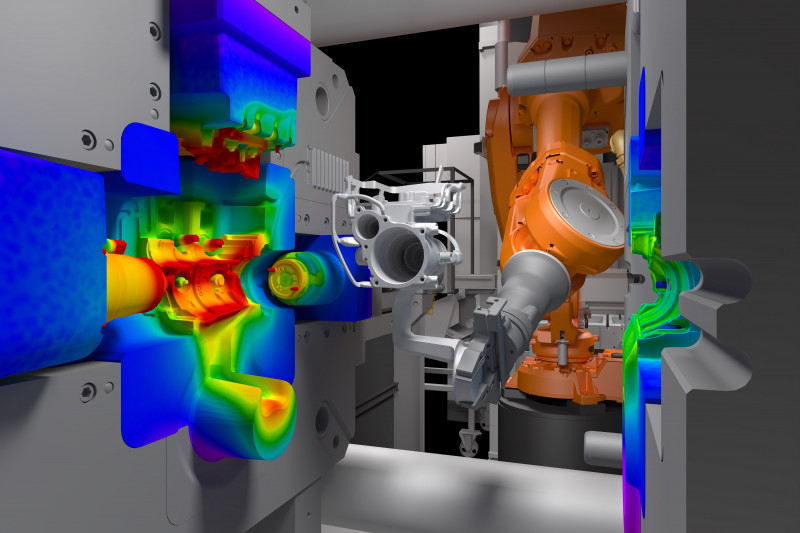Machined casting is a fundamental process in the field of manufacturing. It involves the creation of complex-shaped metal components by pouring molten metal into a mold and allowing it to solidify. This process offers several advantages over other manufacturing techniques, such as flexibility in design, cost-effectiveness, and the ability to produce intricate and large-scale parts. In this article, we will delve into the details of machined casting, exploring its various types, applications, and the steps involved in the process.
Types of Machined Casting
There are several types of machined casting, each tailored to suit specific requirements and produce various types of components. Some common types of machined casting include:
Sand Casting: This is the most widely used form of machined casting. It involves creating a mold by compacting sand around a pattern, which is then removed to leave a cavity. Molten metal is poured into the cavity, and once it solidifies, the mold is broken apart to retrieve the casting.
Investment Casting: Also known as lost-wax casting, investment casting is used to produce complex and highly detailed parts. The process involves creating a wax pattern, coating it with ceramic, and then heating it to remove the wax, leaving a cavity. Molten metal is then poured into the cavity, resulting in the final casting.
Die Casting: Die casting is a high-pressure process that is ideal for producing parts with excellent surface finishes and dimensional accuracy. It involves injecting molten metal into a steel mold, known as a die, under high pressure. Once the metal solidifies, the mold is opened, and the casting is removed.
Applications of Machined Casting
Machined casting finds applications in various industries, including automotive, aerospace, energy, and defense. Some common applications of machined casting include:
Automotive Parts: Many automotive components, such as engine blocks, transmission housings, and cylinder heads, are manufactured using machined casting. This process allows for the production of lightweight yet robust components, contributing to improved fuel efficiency and performance of vehicles.
Aerospace Components: Critical aerospace components, such as turbine blades, compressor casings, and structural parts, are often manufactured using machined casting. This process enables the production of intricate and heat-resistant parts that can withstand the extreme conditions experienced in aircraft engines and structures.
Energy Industry: Machined casting is widely utilized in the energy industry for producing components used in power generation, including turbines, generators, and valves. The process allows for the manufacturing of parts that can withstand high temperatures and pressures, ensuring the efficient and reliable operation of power plants.
The Machined Casting Process
The machined casting process involves several steps, from design to the final product. These steps can be summarized as follows:
Pattern Creation: The process begins with the creation of a pattern, which serves as a replica of the desired casting. Patterns can be made from various materials, such as wood, metal, or plastic. They are designed to include allowances for shrinkage and machining.
Mold Assembly: Once the pattern is ready, it is used to create the mold. In sand casting, the pattern is placed in a flask, and sand is compacted around it. In investment casting, the pattern is dipped in a ceramic slurry, coated with ceramic stucco, and then dried. The process is repeated several times until a suitable mold is formed.
Pouring the Metal: Once the mold is prepared, it is securely clamped, and the molten metal is poured into the cavity through a sprue. The metal is allowed to cool and solidify, taking the shape of the mold.
Mold Break and Finishing: After the metal has solidified, the mold is broken apart to retrieve the casting. The casting may require further finishing processes such as removal of excess material, machining, heat treatment, and surface coating to achieve the desired specifications and surface quality.

Abschluss
Machined casting is a versatile and widely used process in manufacturing. Its ability to produce complex-shaped and large-scale components makes it an essential technique in various industries. By understanding the different types of machined casting, its applications, and the steps involved in the process, manufacturers can make informed decisions and leverage this key process for efficient and cost-effective production of high-quality components.
-

- Druckgussteile aus Mangansiumlegierung Thixomolding-Metallteile
-

- Hochpräzises Druckguss-Lenkrad für die Automobilindustrie
-

- Großhandels-Magnesium-Legierungs-Baby-Zyklus für 3 bis 5 Jahre alte 12-Zoll-Kinderzyklus OEM billig
-

- Autoteile aus Magnesiumlegierung Druckguss Seitenstufe Trittbrett
-

- Magnesiumlegierung Thixomolding-Power-Batter-Gehäuse
-

- Thixomolding Teile & Komponenten Handy Mittelplatine verarbeitet

 0086-750-5616188
0086-750-5616188 +86 13392089688
+86 13392089688 sales@zhongmei-tech.com
sales@zhongmei-tech.com







